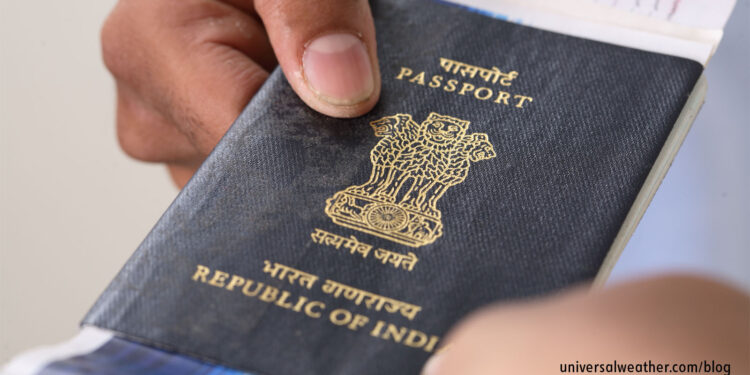Business Aircraft Ops to India: CIQ Requirements

This business aviation blog post is part of a series on operating in Aruba and continues from our last article: “Business Aircraft Ops to India: Fueling and Security.”
While customs, immigration, and quarantine (CIQ) is traditionally cleared in-terminal at airports in India there are steps your local ground handler can take to expedite this process.
The following is an overview of what you need to know:
1. CIQ clearance
Mumbai (VABB), Delhi (VIDP) and Chennai (VOMM) have general aviation terminals (GATs). While it’s possible to clear CIQ within the VABB GAT it’s currently not permitted to clear CIQ clearance within GATs at VIDP or VOMM. At all airports in India, with the exception of VABB, plan on clearing CIQ within main terminals. Note that onboard clearance is possible for air ambulance and/or diplomatic flights but not normal procedure for other GA operations. While operators may request onboard clearance there are no guarantees this will be approved.
2. Expedited crew clearance
At VIDP and a few other airports in India, crewmembers have the option to clear CIQ via a separate crew line. This process normally takes just 5-10 minutes. At airports where crew do not have access to dedicated crew lanes CIQ clearance could require 15 minutes or more, depending upon scheduled commercial traffic at the time.
3. Visa considerations
For nationalities that require visas it’s recommended that these be obtained in advance. While it’s generally not possible for passengers to obtain visas on arrival (VOA), crew may be able to obtain VOAs with restricted 72-hour validity. Note that VOAs depend upon nationality and are at discretion of the immigration agent on duty. In the case of nationals of Bangladesh, Pakistan, China, Iraq, Nigeria, Afghanistan and certain other countries, VOA is not an option. Be mindful that if you do not possess a required visa, or your VOA application is rejected, you’ll not be permitted to enter India.
4. Clearance process
Your ground handler will notify CIQ in advance of your arrival. Upon landing the ground handler will escort passengers and crew to immigration and then customs. Other than at VABB passengers and crew undergo CIQ screening in the main terminal. All luggage is screened by x-ray, on both arrival and departure. Luggage may also be physically checked if there are any concerns on what turns up on the x-ray screen. Note that fees apply if CIQ has been asked to remain available overtime. And, all fees associated with a VOA (when applicable) are payable on arrival. Ground handlers normally settle all airport charges on an operator’s behalf. If you’ve arrived from an international location, and your next stop is within India, taxes based on volume of fuel remaining onboard will also be collected upon landing.
5. Required documentation
Upon international arrival all passengers/crew must have passports with remaining validity of at least six months. Visas for passengers and crew, depending upon nationality, must also be presented. A copy of your gen dec, prepared in advance by the ground handler, is presented to CIQ. Completed arrival cards are also needed for each passenger/crew. These cards will be pre-filled out by your ground handler so long as information has been forwarded in advance. Crew also need to have their crew IDs with them, should they need to access the aircraft prior to day of departure. Airworthiness and registration certificates, as well as worldwide insurance, should always be available. On rare occasions aircraft log books may also be required for inspection.
6. Agricultural, quarantine and pet restrictions
At this time there are no specific agricultural restrictions for GA operators arriving in India. This means you may offload catering to keep at your hotel or at the airport. It’s always best, however, to confirm any agricultural restrictions in advance and prior to importing food or catering items into the country.
For certain airports you may need to use an approved spray to disinfect the cabin prior to arrival. This is a common requirement for VABB. If the cabin is not sprayed at top of descent this will be done with passengers onboard upon arrival.
It’s allowable to temporarily import domestic pets to India, with proper health certificates and vaccination records. Pets will be checked upon arrival by a quarantine official but are not kept in a quarantine facility, assuming required documentation is complete and correct.
7. Additional reading: Business Aircraft Ops to India – Series Index
Note: Links will be updated as articles are published.
- Part 1 – Airport options
- Part 2 – Airport operations
- Part 3 – Ground handling
- Part 4 – Additional services and operating costs
- Part 5 – Fuel and security
- Part 6 – CIQ
- Part 7 – Permit considerations
- Part 8 – Slots and military operations
- Part 9 – Flight planning
- Part 10 – Weather and additional flight planning information
- Part 11 – Hotel and local area
Conclusion
It’s always recommended that crew and passengers obtain any required visas prior to operation to India. While visas on arrival are possible, in certain cases, this is an option best avoided unless you’re dealing with a last minute flight and do not have the time to complete the traditional visa process. Also, be aware that customs and immigration clearance is almost always completed at the main terminal.
Later, we’ll discuss permits for India and their impact on your trip.
Questions?
If you have any questions about this article or would like assistance planning your next trip to India, contact Christine Vamvakas at christinevamvakas@univ-wea.com.




